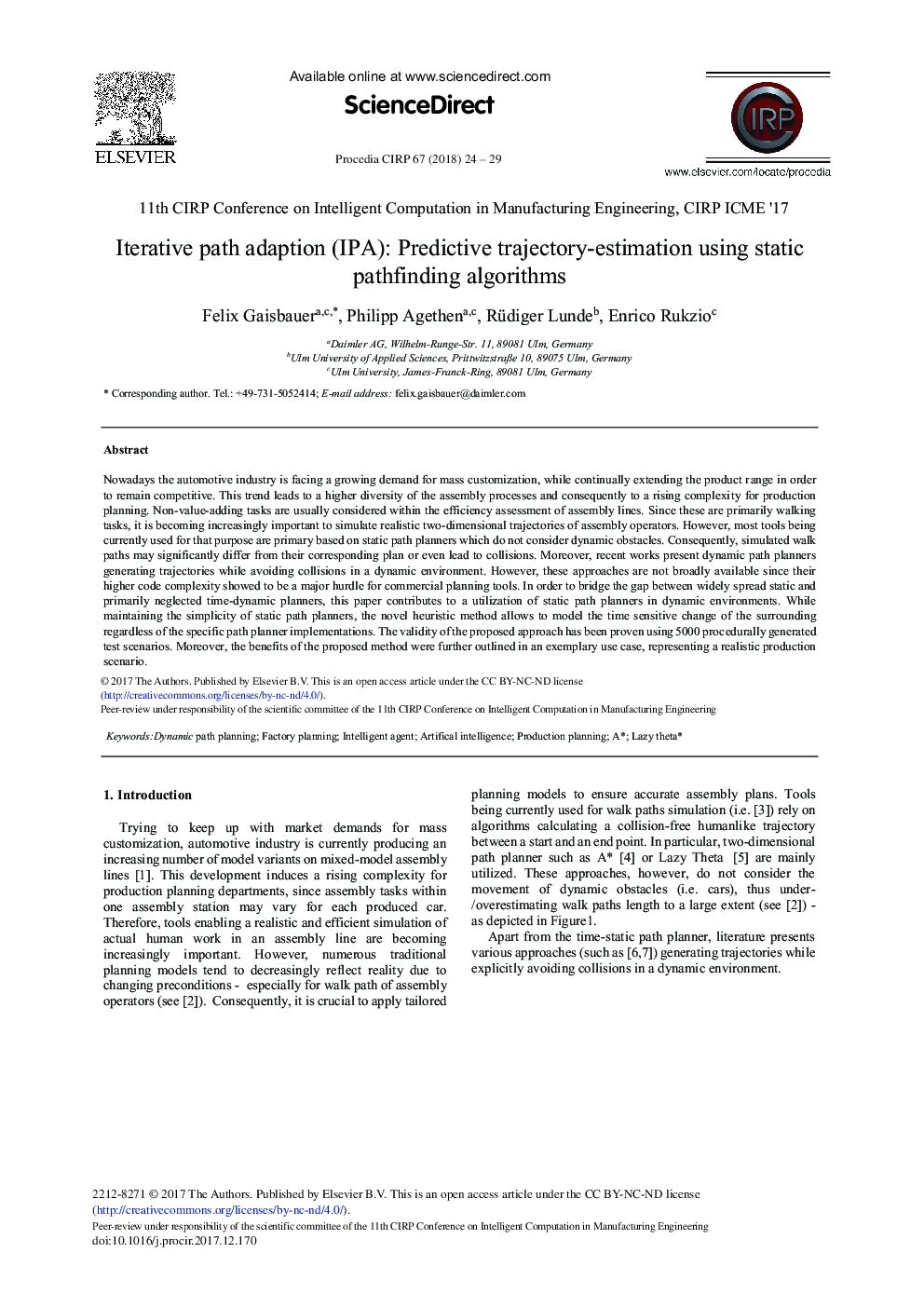| Article ID | Journal | Published Year | Pages | File Type |
|---|---|---|---|---|
| 8050065 | Procedia CIRP | 2018 | 6 Pages |
Abstract
Nowadays the automotive industry is facing a growing demand for mass customization, while continually extending the product range in order to remain competitive. This trend leads to a higher diversity of the assembly processes and consequently to a rising complexity for production planning. Non-value-adding tasks are usually considered within the efficiency assessment of assembly lines. Since these are primarily walking tasks, it is becoming increasingly important to simulate realistic two-dimensional trajectories of assembly operators. However, most tools being currently used for that purpose are primary based on static path planners which do not consider dynamic obstacles. Consequently, simulated walk paths may significantly differ from their corresponding plan or even lead to collisions. Moreover, recent works present dynamic path planners generating trajectories while avoiding collisions in a dynamic environment. However, these approaches are not broadly available since their higher code complexity showed to be a major hurdle for commercial planning tools. In order to bridge the gap between widely spread static and primarily neglected time-dynamic planners, this paper contributes to a utilization of static path planners in dynamic environments. While maintaining the simplicity of static path planners, the novel heuristic method allows to model the time sensitive change of the surrounding regardless of the specific path planner implementations. The validity of the proposed approach has been proven using 5000 procedurally generated test scenarios. Moreover, the benefits of the proposed method were further outlined in an exemplary use case, representing a realistic production scenario.
Related Topics
Physical Sciences and Engineering
Engineering
Industrial and Manufacturing Engineering
Authors
Felix Gaisbauer, Philipp Agethen, Rüdiger Lunde, Enrico Rukzio,
